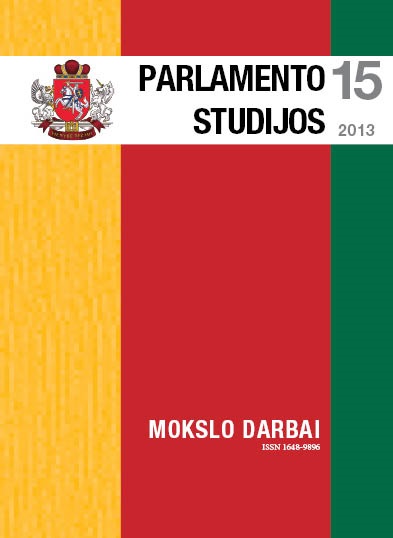Rethinking the Influence of Party Systems on Electoral Volatility: Case of Lithuanian Municipal Councils
DOI:
https://doi.org/10.51740/ps.vi15.237Keywords:
electoral volatility, party system, coalitional patterns, Lithuanian municipal councilsAbstract
Studies of electoral volatility have become especially relevant in recent decades. Several trends are very important: the decline of mass parties, the rise of catch-all and cartel parties, and a progressive weakening of the two cleavages (class and religion) that used to bind Western societies and party systems most strongly. A question arises naturally from such a context: in the absence of mass parties and solid cleavages, what factors are able to keep electoral instability at levels that do not threaten the quality of democracy? This question is especially important in Lithuania, where electoral volatility is very high when compared both to Western countries and other young democracies. One of the most influential explanations of electoral volatility employs party system as an independent variable. However, such research two main shortcomings: first, the direct transplantation of Giovanni Sartori’s classification (influence of polarization on electoral volatility cannot be theoretically justified as unambiguous) and second, the inability of national-level samples to control for the cultural specificity.
To adress the latter problem, this article employs municipal-level data from Lithuanian municipal councils in period 1995–2011. As for the former, It is argued in this article that if party system mechanics is included as an independent variable, it must be conceptualized (and measured) as a long-term pattern of coalitional relations between parties. A four-fold party system classification that is based both on G. Sartori’s (fragmentation and polarization) and Peter Mair’s criteria (openness and closeness of party system) is proposed: 1) a two-block party system structuring the party competition into two blocks (with or without a center party) that is transparent to voters (A block vs. B block); 2) a predominant party (parties) or block of parties constantly retains governing status (irrespective of the voters’ choice), where competition is relatively transparent (government vs. opposition); 3) a relatively dominant party that uses its dominance in the governing coalition to manipulate the weak structuring of party systems and retain the most important posts in government while constantly changing coalition partners (the only transparent aspect is that if a voter chooses the relatively dominant party, he chooses to support its rule); 4) an unstructured pattern with an open party system that does not exhibit any transparent blocks or predictable coalitions.
Since the influence of coalitional behavior patterns (local party systems) is a long-term factor, it is possible to analyze this relationship (in Lithuanian municipal elections) only starting from 2007. Previous to this election, there were opportunities for at least three changes in local governing coalitions (in 1997, 2002, and 2007). This limitation notwithstanding, empirical analysis reveals that local party systems (defined as patterns of coalitional party behavior) exert influence over electoral volatility in the long term (sixth defense statement of this dissertation). In party systems where there are fewer incentives to vote for particular party block alternatives, the possibility of a higher electoral volatility is greater.








 The metadata of the scholarly journals and publications of the Lithuanian National Martynas Mažvydas Library is distributed by
The metadata of the scholarly journals and publications of the Lithuanian National Martynas Mažvydas Library is distributed by 